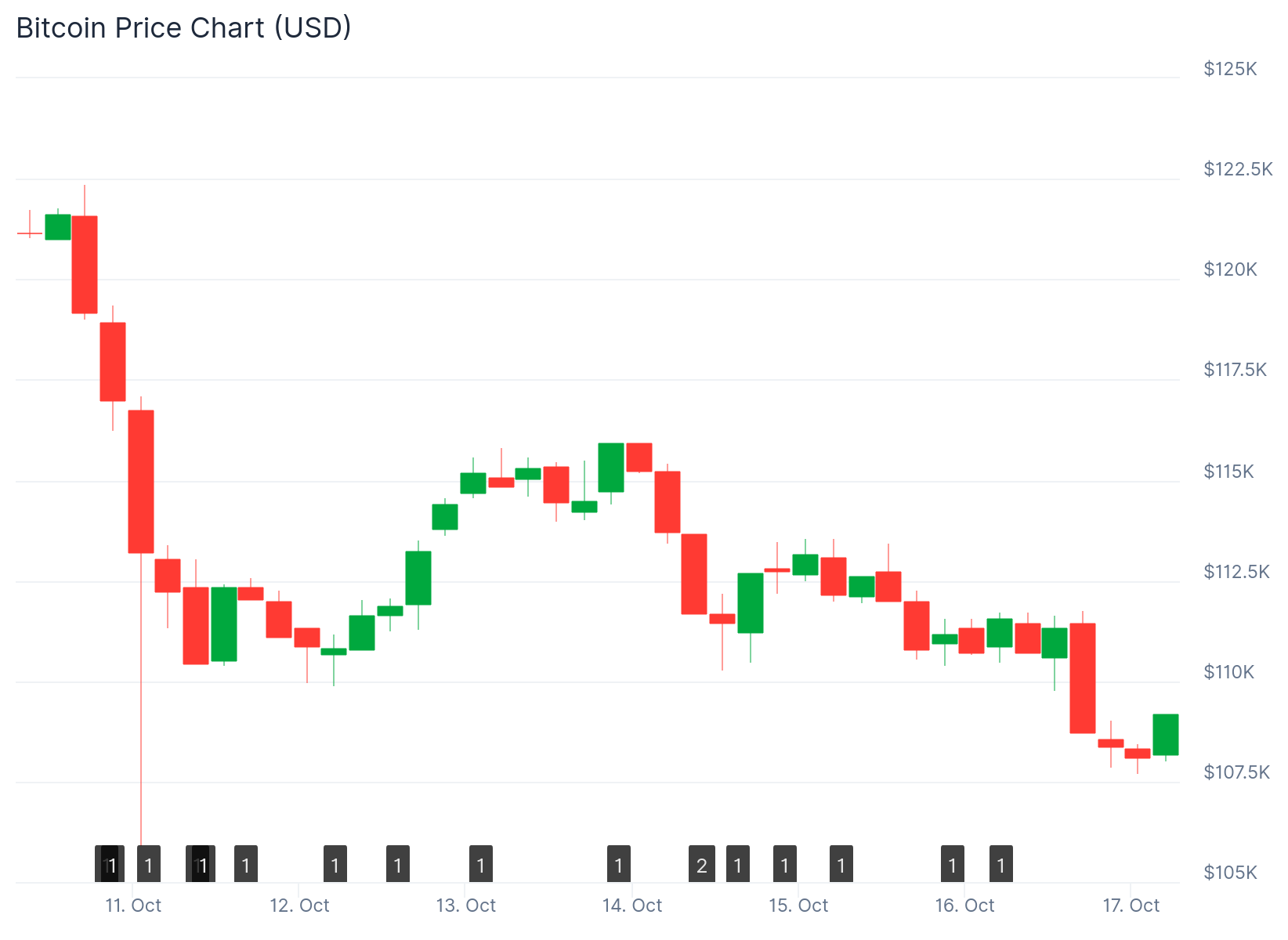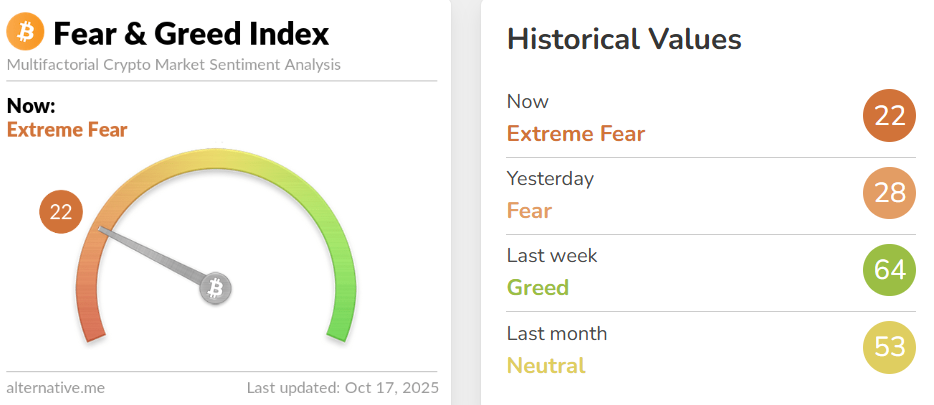TLDR
- Bitcoin Fear and Greed Index plunged to 24, the lowest reading in 12 months, down from 71 last week
- Miners transferred 51,000 BTC worth $5.7 billion to exchanges, the largest deposit since July
- Small wallet holders accumulating BTC while long-term investors sold 265,715 BTC in 30 days
- Bitcoin trading below $108,800 as U.S.-China trade war and banking concerns pressure markets
- Bitwise analysts say extreme fear creates buying opportunity similar to August 2024 conditions
Bitcoin fell below $108,800 as market sentiment reached its most fearful level in a year. The Crypto Fear and Greed Index dropped to 24, signaling extreme caution among traders and investors.

This represents a dramatic shift from just one week earlier when the index showed 71, indicating greed. The rapid sentiment decline mirrors bearish periods from 2018 and 2022 when similar fear levels preceded market bottoms.

U.S.-China trade tensions intensified after President Trump confirmed both nations are engaged in a trade war. Regional banking issues also emerged when Zions Bancorp and Western Alliance Bancorp disclosed fraudulent loan problems. These factors combined to create widespread risk aversion across financial markets.
Bitcoin futures markets experienced historic volatility. Perpetual futures open interest collapsed by nearly $11 billion, representing the largest decline ever recorded. This forced liquidation event cleared out leveraged positions across major exchanges.
Miners and Long-Term Holders Exit Positions
Onchain data reveals miners moved substantial Bitcoin holdings to exchanges. Since last Thursday, approximately 51,000 BTC worth over $5.7 billion flowed from mining wallets to trading platforms. This marks the biggest miner deposit since July and typically indicates upcoming selling pressure.
Long-term Bitcoin holders also reduced their positions. Data shows 265,715 BTC was sold during the past 30 days, making it the largest monthly outflow since January 2025. These holders typically maintain positions through volatility, so their selling suggests changing market conditions.
However, smaller Bitcoin holders are moving in the opposite direction. Glassnode data indicates wallets containing 1 to 1,000 BTC increased accumulation during the recent price drop. This buying activity from retail and mid-tier investors shows confidence at current price levels.
Analysts See Buying Opportunity in Fear
Bitwise research analysts André Dragosch, Max Shannon, and Ayush Tripathi believe selling pressure has peaked. They compare current conditions to the Yen carry trade unwind from August 2024, which created temporary panic before prices recovered.
The Bitwise Cryptoasset Sentiment Index fell to its lowest point since that August event. Historical patterns show extreme fear readings often mark favorable entry points before seasonal strength in Q4.
Min Jung from Presto Research noted Bitcoin prices remain sensitive to trade war developments. Vincent Liu from Kronos Research observed that BTC and ETH showed more resilience than equities but warned that thin liquidity makes markets vulnerable to quick sentiment changes.
Nick Ruck from LVRG Research suggested Federal Reserve rate cuts or new spot crypto ETF approvals could trigger a Q4 price rebound. Worst-case scenarios might push Bitcoin below $100,000 if geopolitical and economic conditions worsen.
Bitcoin maintained relative stability around $110,000 before the recent decline. This price action suggests institutional demand or ETF buying may be absorbing available supply from miners and long-term holders.
Ether dropped 1.5% to $3,928, falling below the $4,000 threshold. Other major cryptocurrencies including BNB, XRP, and Solana experienced similar declines as fear spread across digital asset markets.
Bitcoin traded at $108,757, down 1.57% over the past 24 hours. Google search interest for Bitcoin reached multimonth lows, indicating reduced public attention typical of bearish market phases.



